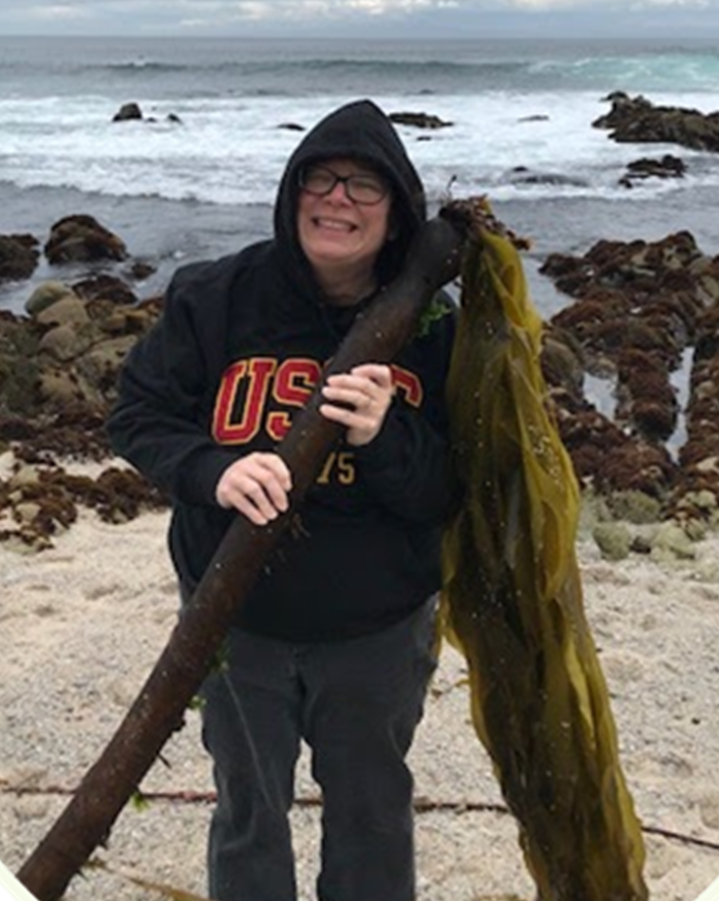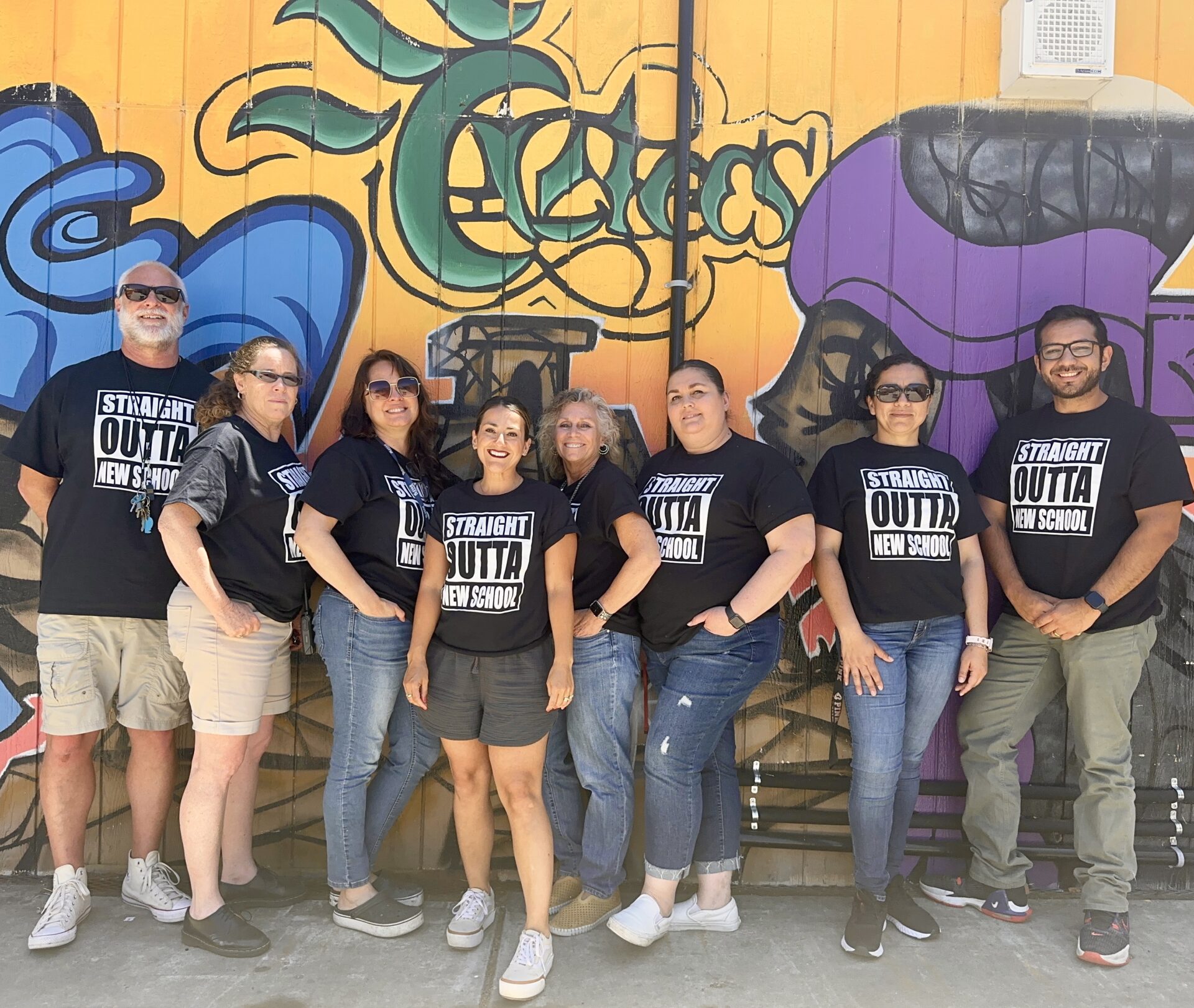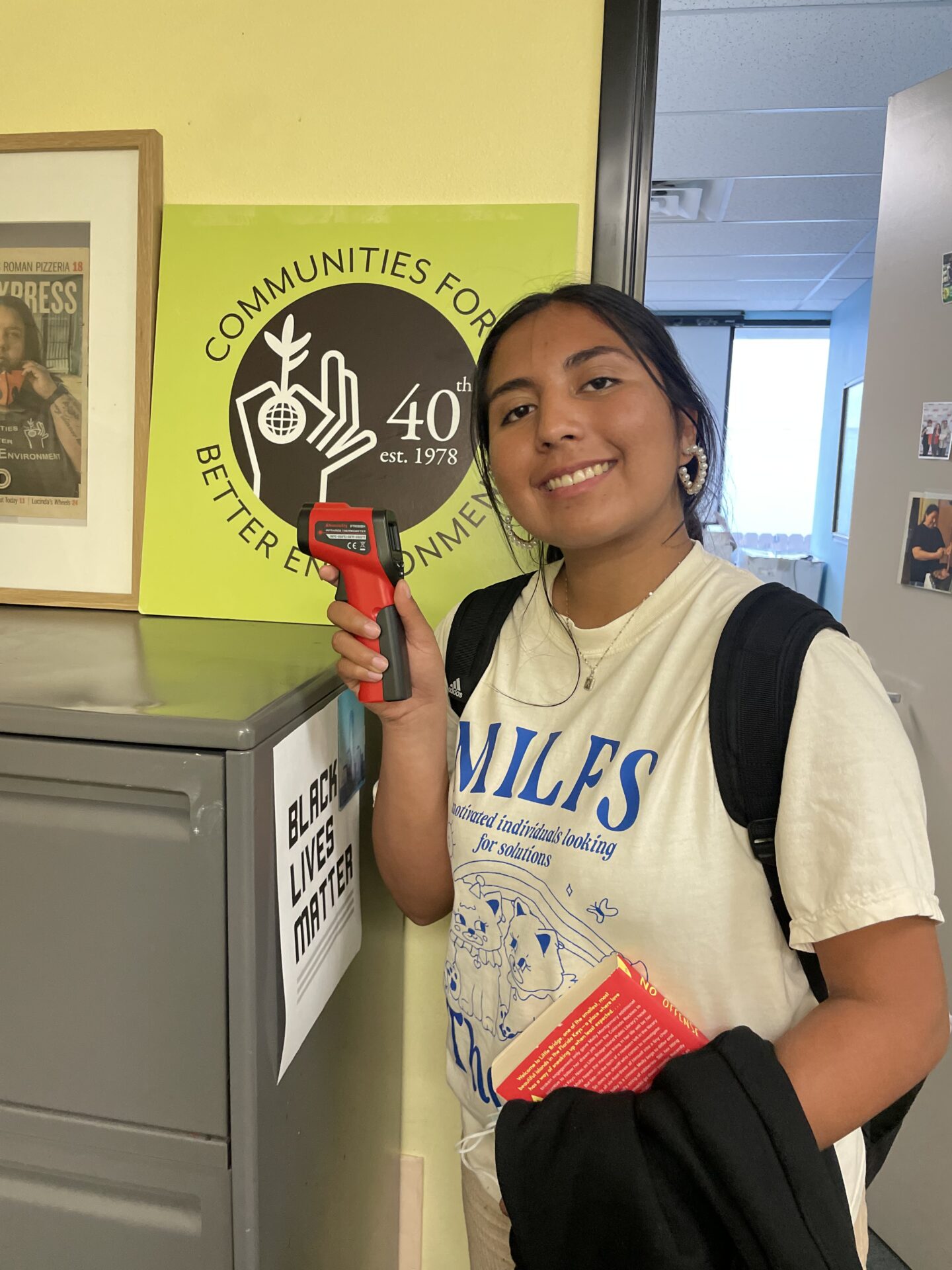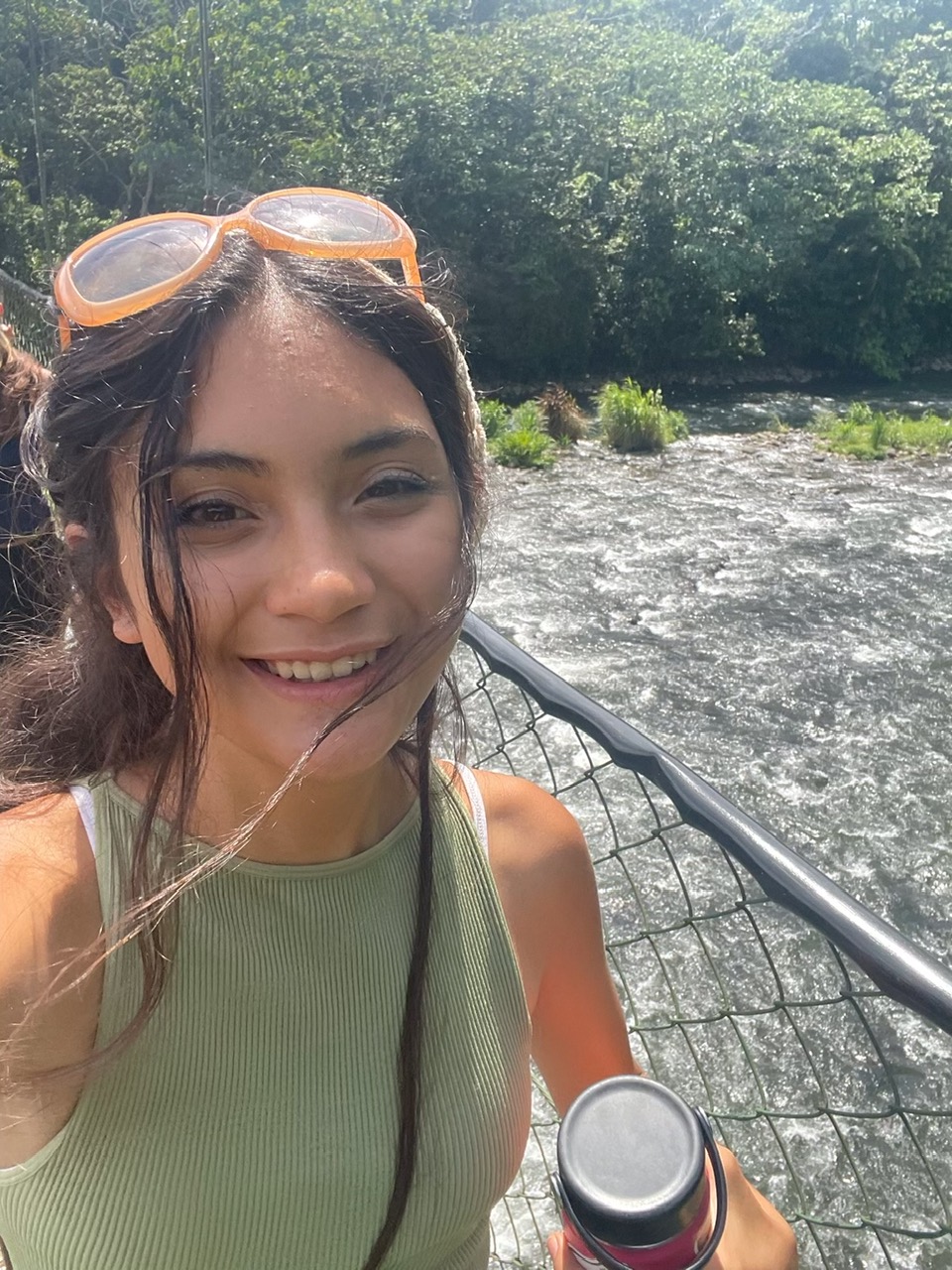2024 CEEF Environmental Education Award Winners
CEEF is excited to announce the winners of our 2024 Excellence in Environmental Education (EE) Awards! Each year, CEEF recognizes students, teachers, and administrators for demonstrating excellence in environmental education and stewardship. Educators who motivate young people to understand and care for the environment are integral to creating an informed society as we collectively deal with impacts of climate change. This year, we celebrate winners from the categories of Educator, Administrator, as well as two in the Student category.
Educator Category
Satina Ciandro, Watsonville High School 
Satina Ciandro is an environmental and climate literacy champion in California’s public education system. A 25-year veteran science teacher at Watsonville High School, Satina has long been committed to getting students out into the field for experiential learning. She has managed to take students from the wetlands to the mountaintop redwood forests and everything in between to ensure they get exposure to natural phenomena that inspire curiosity and wonder. The majority of her students come from families that face many barriers to participate in outdoor education and field trips (92% qualify for free and reduced-price meals, are English learners, or come from foster families) and she works tirelessly to provide these life changing experiences.
Satina focuses on designing learning that will be meaningful and engaging for her students. She is gifted at opening students’ eyes to environmental issues and inspiring students to be part of solutions. Through her long-standing work with the Monterey Bay Aquarium, Satina and her students participate in the Aquarium’s Ocean Plastics Pollution Summit and Climate Action Projects Summit. She became a lead teacher in the Watsonville Area Teens Conserving Habitats (WATCH) program. Through WATCH, students spent the summer exploring the Pajaro River Watershed, meeting with local scientists and participating in inquiry-based learning. Students also learned about environmental issues in their community and participate in local restoration efforts. In the fall, the same students enrolled in a WATCH Honors Biology class with Satina and developed their own field research project based on an environmental topic. They worked with Aquarium staff and teachers, as well as scientists and educators from the community to complete their projects. Upon completion of the projects, students received a scholarship and community service hours needed for graduation. Though the WATCH program has now ended, Satina has observed students’ growing commitment to environmental issues as the local community becomes increasingly aware of climate change, especially after terrible flooding in the Pajaro area.
In response to the impact of climate change on her students’ mental and emotional health, Satina began to seek out ways to address eco-anxiety and she joined the Teacher Leadership Institute for Sustainability at Santa Cruz County Office of Education. She provides space and support for her students to take the spotlight through serving as the advisor of the SAVE club which focuses on raising awareness about local environmental concerns. Club members are changing the waste management system at their school to include composting. She also serves on the district Green Team and has helped convince the superintendent to set a goal of Green Business Certification for every school in the district. Satina also helped to revamp the Environmental Science and Natural Resources (ESNR) pathway at Watsonville High School and continues to teach career technical education courses as part of that program. Her contributions to student success and environmental and climate literacy are practically countless!
Administrator Category
Mr. Love and New School Administrators

The Outdoor School & Character Development Program at the New School engages alternative education high school students from Watsonville/Pajaro Valley in service learning, immersing in nature and community, learning about the environment and community to develop a relationship with both, and participating in collective community service. This six-month program is fueled by the passion and dedication of Mr. Love, a teacher and administrator at the New School, and the network of community partners he has created. Students go to the Monterey Bay Aquarium, participate in deep sea lab experiments, go whale watching, hike around protected estuaries, hike in the redwoods, spend time reflecting and journaling in nature and taking stock of their relationship to the rest of the natural world, visit the California Academy of Sciences, volunteer in wetland and beach restoration, volunteer at food bank nonprofits, meet elected officials and community leaders, and experience two-way, meaningful and respectful relationships with adult community members and their environment. The program shifts the perspectives of the majority of teens who participate which deepens their bonds with one another and their community while helping relieve the stress of their daily lives. It is designed to help students find hope.
Students at New School are able to experience activities that typically involve access- barriers due to associated costs. This breaking down of barriers advances environmental literacy and justice for these teens who are disproportionately burdened by agricultural pollutants, traffic violence, and lack of access to public space. Though students live within fifteen minutes of the beach and ocean by car, many have barely spent any time enjoying this treasured part of the California landscape. As part of the school program, students not only get to explore parks and other designated preserves, but they are encouraged to cultivate an appreciation for the nature at their doorstep. Students take time to do simple activities such as bird watching and other nature observations, or simply taking their breaks outdoors.
Mr. Love and others who support the program engage students in restorative environmental practices such as community gardening, cleanups, and wetlands restoration as acts of service and love to one another. One student said – “sure, we could go to therapy, but sometimes I think why do adults go to therapy when they could go outside? Nature is therapy.” Students have shared that the program gives them hope, which is critical for a generation growing up in the midst of climate change. Mr. Love, other program leaders, and the students themselves can be celebrated for their refusal to be defined by the socio-economic and environmental inequities surrounding them as they embrace the rewards of working to be in right relationship with each other and the nature around them.
Student Category
Montserrat Hidalgo, 12th Grade, South Gate High School

Montserrat (Montse) Hidalgo is a recently graduated senior bound for Williams College as an environmental studies and biology major. Montse was an active member of her high school class, creating her school’s first environmental club, the Youth Action Club, to prmote awareness and take action to address environmental issues and their impact on the local community. She led her peers in planting native trees and painting hot surfaces lighter colors to reduce the urban heat island effect in her region. Her teachers note that “through clean-ups, organizing, and educating the public about the issues, Montse is a trailblazer in the field of environmental science and is already making a huge impact at her school and in her community.” Montse’s dedication is so highly regarded that she appeared in a local magazine for the work she does in her community of South Gate and beyond.
Montse’s teachers note that she is thorough in her commitment to understanding the complexities and nuances of the environmental issues she studies. Moreover, Montse focuses on finding sustainable solutions to support the health of her local community. Her father notes how proud he is of the fact that Montse never gives up and presses on with issues that she knows to be important. In fact, much of what drives Montse is seeking the well-being of her community, especially after witnessing the ill effects of air pollution on her peers. While looking ahead to her undergraduate work, Montse is already considering what sort of graduate program will further equip her for her climate change and environmental justice work.
Sofia Spagarino, 10th Grade, SD Met High School

Sofia Spagarino is an 11th grader in San Diego who is deeply involved in doing what she can to promote the well-being of the environment. This passion drove her to take up the presidency of the Community Service club on her high school campus that focuses on environmental issues. She has logged over 100 community service hours that have directly related to environmental science and conservation, including preventing the spread of non-native plants in a national park, the replanting of native plants, and heading up the facilitation of the aquaponics garden on her school campus. According to one of her teachers, it is due to Sofia’s leadership that the number of community service hours that her school contributed more than tripled from one year to the next.
Sofia has always been very aware of the problem of invasive plants in the local San Diego area. After working with Cabrillo National Park in helping to reduce such plants in the park, Sofia sought to continue the work with a local community organization, Friends of Rose Canyon. There she organized a group to plant native flora. She enjoyed the experience so much that she reached out to the organization to promote another planting effort to involve even more students from her school. That project included planting fifty native plants, including oak trees and sage bushes. Sofia appreciates that these native species hold cultural significance to the Native people of the area, and that there are endangered bird species in the canyon that rely on these plants.
Wanting to learn about sustainable agriculture, Sofia has been heading up the facilitation of the aquaponics garden on her school campus and this experience then led to her current internship at the Hubbs-Seaworld Research Institute. There, they work to replenish populations of endangered marine species including the white sea bass and California halibut. Sofia is well on her way to pursuing a career in environmental engineering.